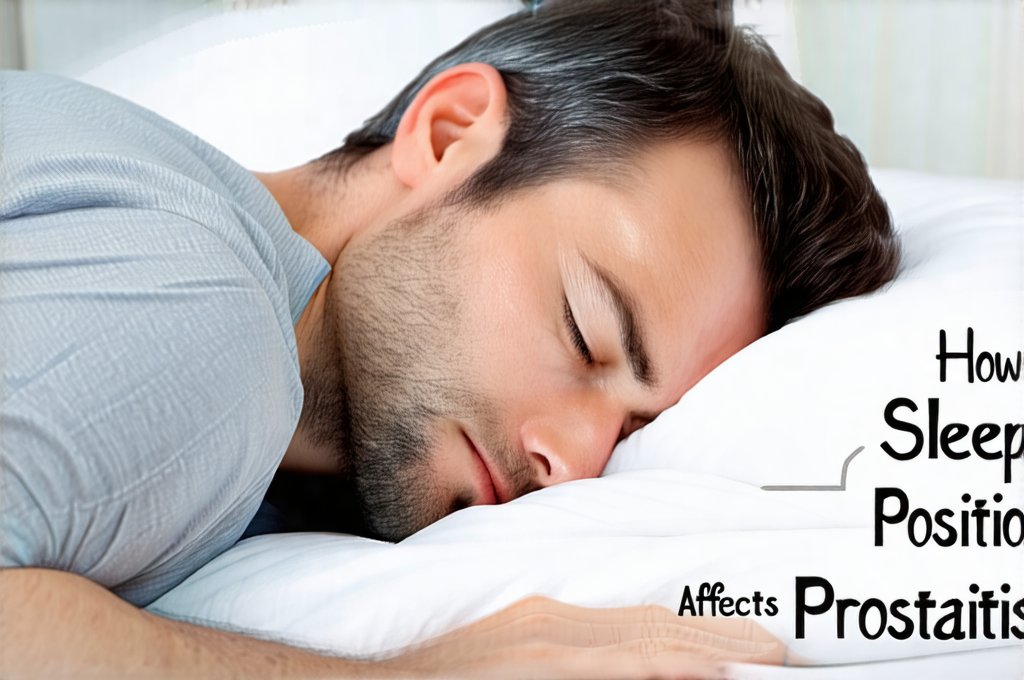Chronic prostatitis is a debilitating condition affecting millions of men worldwide, characterized by pain in the pelvic region, urinary difficulties, and often, significant disruption to daily life. While treatment options exist, managing the persistent discomfort can be challenging. Increasingly, patients are exploring the impact of lifestyle factors on their symptoms, including sleep position. The relationship between how we sleep and the intensity of prostatitis pain isn’t fully understood, but emerging evidence suggests a strong connection, stemming from pressure points, nerve compression, and the overall effect on pelvic floor muscles. Understanding this interplay can empower individuals to make informed choices about their sleeping arrangements to potentially alleviate some of their discomfort.
The prostate gland itself is relatively sensitive, and its location in the pelvic region means it’s easily affected by external pressures. Poor sleep posture can exacerbate inflammation and irritate surrounding nerves, triggering or intensifying prostatitis symptoms. Furthermore, a compromised sleep position often leads to muscle tension, particularly in the lower back, hips, and pelvic floor – areas intrinsically linked to prostate health and pain perception. It’s crucial to remember that everyone experiences prostatitis differently; therefore, finding the optimal sleep position is highly individual and may require some experimentation. This article will delve into how various sleep positions can impact prostatitis pain, offering insights and practical suggestions for improving nighttime comfort.
Sleep Positions and Prostatitis Pain: A Detailed Overview
Different sleeping postures place varying degrees of pressure on the pelvic region and surrounding structures. Generally, positions that minimize direct pressure on the perineum (the area between the scrotum and anus) are favored. Side-sleeping is often recommended as a starting point because it distributes weight more evenly than lying on one’s back or stomach. However, even side-sleeping can be problematic if not supported properly. For example, simply curling up in a fetal position may compress the pelvic floor muscles, potentially aggravating symptoms. Utilizing pillows for support – between the knees and under the lower back – is essential to maintain proper spinal alignment and reduce strain.
Conversely, stomach sleeping is typically discouraged as it significantly increases pressure on the perineum and can lead to nerve compression. This position often forces a hyper-extension of the lower back, further contributing to muscle tension in the pelvic region. While some individuals find temporary relief in this position due to its perceived relaxation effect, the long-term consequences for prostatitis pain are generally negative. Back sleeping, while seemingly neutral, can also be problematic if there’s insufficient support for the natural curvature of the spine. This lack of support can place stress on the lower back and indirectly affect pelvic floor muscles, potentially exacerbating prostate discomfort.
Ultimately, the “best” sleep position isn’t one-size-fits-all. It depends on individual anatomy, the specific type of prostatitis (acute vs. chronic), and personal comfort preferences. Experimentation is key, coupled with a mindful awareness of how each position impacts symptom intensity. Paying attention to body signals and adjusting accordingly are essential steps in finding a sleep posture that promotes restful sleep and minimizes pain.
Optimizing Your Sleep Environment for Prostatitis Relief
Beyond the chosen sleep position, the overall sleep environment plays a crucial role in managing prostatitis symptoms. A supportive mattress is paramount; one that’s too soft will lack adequate support, while one that’s excessively firm can create pressure points. Medium-firm mattresses are often recommended as they provide a balance between comfort and support. Similarly, pillows should be strategically used to maintain proper spinal alignment and reduce strain.
Consider these factors when setting up your sleep environment:
* Pillow Placement: A pillow between the knees while side sleeping can help align the hips and relieve pressure on the lower back. Another pillow under the lower back provides additional support.
* Mattress Support: Assess your mattress for adequate support, particularly in the lumbar region. If necessary, consider a mattress topper to modify its firmness.
* Temperature Regulation: Maintaining a comfortable sleep temperature is important as overheating or being too cold can exacerbate muscle tension.
* Minimizing Distractions: A dark, quiet, and cool bedroom promotes deeper, more restorative sleep.
Creating a relaxing bedtime routine can also contribute to symptom management. This might include taking a warm bath, practicing gentle stretching exercises (avoiding those that directly stress the pelvic floor), or listening to calming music. Prioritizing sleep hygiene – establishing a regular sleep schedule, avoiding caffeine and alcohol before bed, and minimizing screen time – is essential for optimizing sleep quality. A well-rested body is better equipped to cope with chronic pain conditions like prostatitis. Understanding how regular sleep affects urinary stability can also be beneficial in the long term.
Understanding Pelvic Floor Muscle Tension & Sleep
The pelvic floor muscles play a critical role in supporting the pelvic organs, including the prostate gland. When these muscles become tense or spasmed, they can contribute significantly to prostatitis pain. Poor sleep posture often exacerbates this tension, creating a vicious cycle of pain and muscle tightness. Specifically, stomach sleeping tends to increase abdominal pressure which can directly impact the pelvic floor. Side-sleeping with improper support, as mentioned earlier, may also lead to unintended compression.
Addressing pelvic floor dysfunction is an important component of prostatitis management. Techniques such as pelvic floor physical therapy (PFPT) can help release tension and restore proper muscle function. Learning techniques for mindful relaxation, like diaphragmatic breathing, can also reduce overall muscle tension and improve sleep quality. Incorporating gentle stretches designed to relieve pelvic floor stress into your bedtime routine may further aid in pain reduction. If you experience significant mental health impacts from chronic bladder pain, consider exploring how chronic bladder pain affects your mental health long-term.
The Role of Spinal Alignment and Posture
Proper spinal alignment is fundamental to minimizing pressure on the prostate gland and surrounding nerves. A misaligned spine can lead to nerve compression, muscle imbalances, and increased inflammation. Maintaining good posture throughout the day – whether sitting, standing, or walking – is essential for preventing these issues. However, even with daytime postural awareness, poor sleep position can undo those efforts.
When choosing a sleep position, focus on maintaining the natural curves of your spine. Using pillows to support the lower back and neck can help achieve this alignment. Avoid positions that cause excessive bending, twisting, or compression of the spinal column. Consider consulting a physical therapist or chiropractor for personalized recommendations on postural correction exercises and ergonomic adjustments to your workspace and sleep setup.
Experimentation and Finding What Works For You
Ultimately, there’s no single “magic” sleep position for prostatitis pain relief. The key is experimentation and finding what works best for your individual body and condition. Start by trying side-sleeping with appropriate pillow support, and gradually explore other positions to assess their impact on your symptoms. Keep a sleep diary to track your experiences, noting which positions provide the most comfort and least amount of pain.
Remember to:
* Be patient and consistent with your experimentation.
* Listen to your body’s signals and adjust accordingly.
* Don’t hesitate to seek guidance from healthcare professionals – a doctor, physical therapist, or sleep specialist – for personalized recommendations and support.
* Focus on creating a holistic approach to pain management that includes not only sleep optimization but also lifestyle modifications, pelvic floor therapy, and stress reduction techniques. Understanding how sleep deprivation worsens bladder pain can help you prioritize rest.
Disclaimer: This article is intended for informational purposes only and does not constitute medical advice. It is essential to consult with a qualified healthcare professional for any health concerns or before making any decisions related to your health or treatment.





















